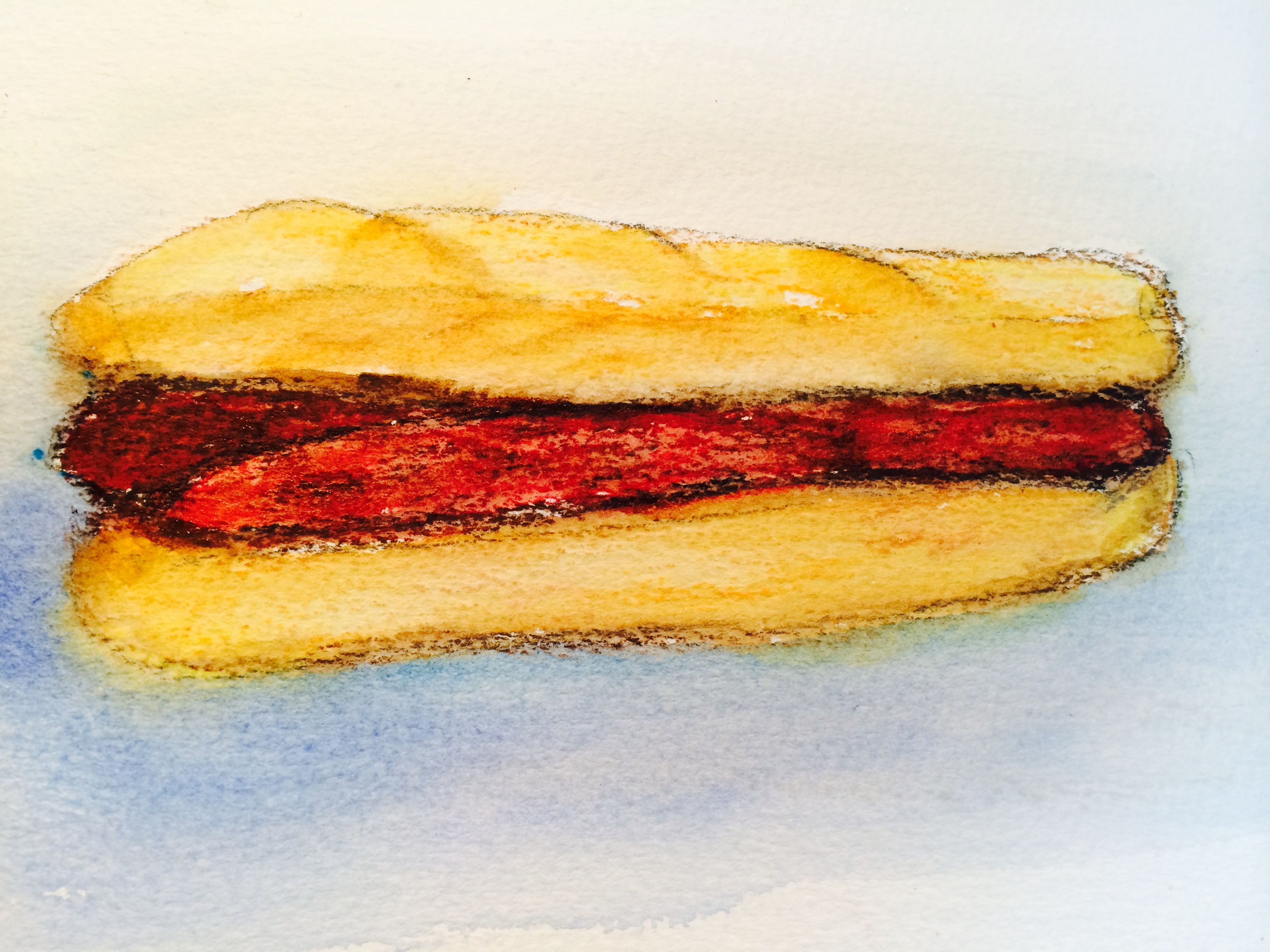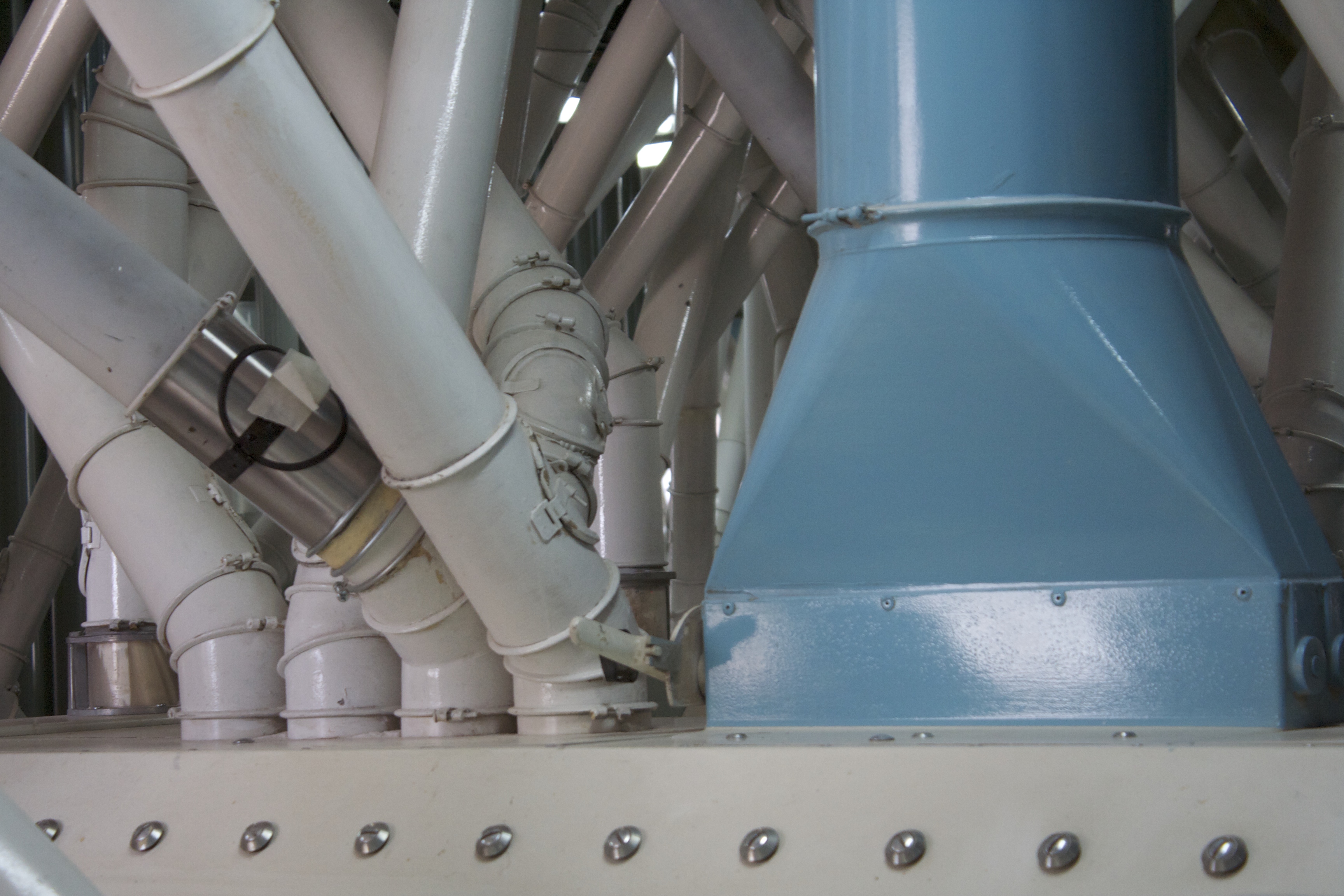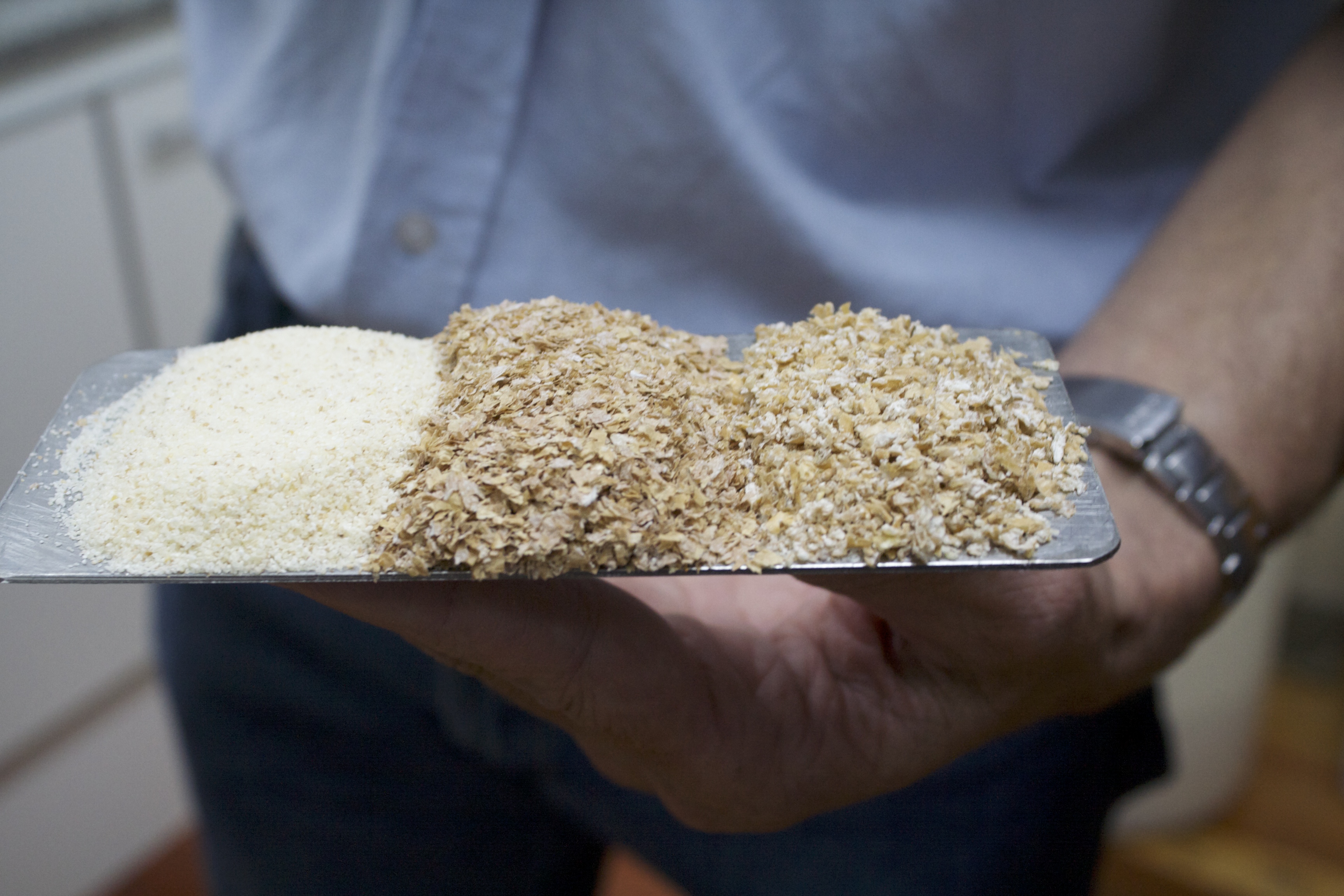 Most food in Argentina comes from somewhere else, at least in its earliest forms. Like wheat. Sure, there’s asado, an ubiquitous dish on Argentinian menus that is mostly a mound of barbequed meat. But in Argentina, the mishmash of culinary traditions that exists today reflects a long history of immigrants who left very little of anything that can be called truly Argentinian.
Most food in Argentina comes from somewhere else, at least in its earliest forms. Like wheat. Sure, there’s asado, an ubiquitous dish on Argentinian menus that is mostly a mound of barbequed meat. But in Argentina, the mishmash of culinary traditions that exists today reflects a long history of immigrants who left very little of anything that can be called truly Argentinian.
The view that the Argentinian national cuisine is actually a mix of British, Italian, and French food can be galling to some cultural purists. The Scots made significant cultural contributions, such as the introduction of football. The British brought tea drinking to Argentina while the native plants added the local flavors of yerba mate. And the British sailed to the Falkland Islands and the Argentinian mainland during the 19th century, hauling their sheep and cattle along as they established ranches (estancias) that survive today, even if only as useful buildings for a remote resort.
Estancia Christina, where our family spent the Christmas holidays, is one such compound, located in Glacier National Park. Visitors can wander through a museum on the ranch that exhibits shearing and branding equipment hauled to the estancia by John Percival Masters in the early 1900s. He and his family had almost 30,000 sheep and shipped wool to Buenos Aires on railroads built by British engineers. Asado was made possible by those decades of cattle, sheep, and pig importations during those years of British ranching.
Argentina is known for its football world championships, not for its bread. Football fans consume thousands of choripàns at their local stadiums. So choripàn bread, closely resembling French baguettes in taste and flavor, brings Argentina and France together if not for the duration of a rowdy football match, at least for the time it takes to consume a chorizo the sandwich.
Wheat flour, used to make chorizo sandwiches, came from wheat brought by the Spaniards to South America during the sixteenth century. The bread in Argentina is almost exclusively white, a lingering imprint left by Europeans that saw white bread as the signature of upper class cuisine. In January, at the Central Market outside Buenos Aires, dozens of customers waited in line to buy freshly baked French baguettes for one kilo of baguettes for seven pesos. (The Argentinian government has set bread prices at ten pesos per kilo, so wonder the line for one kilo of bread at seven pesos wound around and around the bakery stall that day.)
Argentina got serious about growing wheat after the new nation (established in 1852) built a School of Agronomy in 1875. Soon Argentina exported grain for the first time and began to industrialize the country’s grain production system. Bad weather and crop failures in the early 1900s combined with a lack of demand for grains, a commodity not considered important to those waging World War I. When the war was over and the economic depression ended and workers began to demand protection from those who appeared to profit by the resurgence of grain production.
Today’s wheat market is in turmoil as Kirchner’s government restricts wheat exports, causing wheat farmers to lower production and in some cases move their fields into the more lucrative production of soybeans, which have no limits even though sales are taxed at thirty-five percent. Since farmers want to reap the benefits from the more liberal policy concerning soybeans, they are depleting the soil with the nutrient hungry soybeans.
The wheat farmers that remain in their field soldier on, producing grain for choripàn bread. One mill outside Buenos Aires, Melino Chacabuco, receives shipments of grain around the clock. Chacabuco is a sleepy semi-industrial town of just over 35,000 inhabitants located on the Saluda River, now the Laguna Rocha. The presence of a river must have been the attraction for building a mill, a winding conduit for grain to the mills. Tall smoke stacks, grain storage silos, and cylindrical billboards advertise Chacabuco both as a town and as a mill.
I visited the mill, driving three hours to Chacabubo on a long, flat highway through dusty agricultural towns. At the mill, a long queue of bright red trucks transferred grain from their bellies into the metal grates built into the flooring of the mill delivery courtyard. To show how all these shipments of grain become the refined, enriched white flour used in choripàn sandwich bread, two mill employees met me in the mill conference room. With a display more suited to a foreign dignitary, production manager Juan Rafael Errasti and food engineer Gabriela Benavidez sat at a long wooden conference table, slide projector perched at one end, American and Argentinian flags flanking each other, and a basket of sweet, sticky, shiny Argentinian pastries slowly circumnavigating the table.
Both Rafael and Gabriela explained how their mill made flour, and oh, pet food, a byproduct of milling flour. Molino Chacabuco S.A. was founded by Crespo & Rodriguez, a firm in the early 1900s. Don Tomás Crespo and Don Jose Maria Rodríguez acquired the milling equipment in Chacabuco in 1918.
Inside the old Chacabuco Mill, Rafael and Gabriel talk about their jobs. Rafael revealed that his recent promotion as a manager made him uncomfortable. Trained as a mechanical engineer, he confessed that he knows how milling equipment works, not people. He’s tall with silver hair and is wearing a short-sleeved shirt to keep cool in on this mid-summer day. The warm, damp air smells of ground flour.
Gabriela appears to thrive in her job as a food scientist, a position she has had for the last twenty-nine years. Slowly stirring her tea as she empties a series of sugar packets into her cup, she explained how flour continues to hold her interest. A simple loaf of bread, she says, is not easy to make. Not all grains of wheat are created equal, according to Gabriela, who described all the variances that can occur and all the adaptations and challenges that arise as a result of differences caused by different growing practices and weather changes.
Adding to the complexities of her flour world, she believes that bakers today are not as skilled as in the past, sometimes blundering through the making of bread, inconsistently, often tossing in ingredients without regard for precision or, she suggests, any concern for quality. As a result, Gabriela is in constant contact with her customers, advising, sometimes training them so they can create a stable, consistent loaf. After all, she wants them to stay in business and it’s the flour that will get a bad rap if a customer feels the bread doesn’t taste good.
Gabriela reports to Rafael, who towered over her with his wiry six-feet. Her hair is short and dark brown, drawn back over her face by her reading glasses. Wearing a white lab coat with the company logo on one side, she conveyed the competence of a scientist betrayed, in some moments, by an occasional twinkle and smile. During our tour through the factory, we caught each other’s attention when we approached a large area where the highly-polished wooden floor begged for a tango dancer, or two. Spontaneously, we both mimicked the motions of tango dancing, sliding across the floor for a few minutes undetected by the oblivious males in our group.
Rafael and Gabriela led us into the factory, a collection of buildings adjoining their offices. Winding our way in between the tall silos of grain awaiting the capacious maw inside the largest of the buildings, we began our trek up and down the five floors of 1950s style milling equipment.
The mill was impeccable. The machinery was either emitting soft grinding sounds or energetically quivering and rumbling as flour coursed throughout the different factory floors. Every machine seemed to be either grinding or sifting. In a quiet room shut off from these sounds and vibrations, Raphael and Christina presented a series of trays, each with tiny piles of ground grains in various stages of milling. Trays appeared and were whisked away in a performance designed by a team of millers who displayed the same sort of geeky-ness that you find in a chemistry lab. Christina and Raphael showed, with their small piles illustrating the progressive stages of milling how the grains became 00 or 000 flour, two specifications indicating fineness. (The Argentinians use the Italian system for grading flour according to fineness. The more zeros, the finer the grind.)
And the reveal of small piles of flour didn’t end in the small room filled with flour samples. On each floor, Raphael and Gabriela went from machine to machine, pulling out samples of flour to demonstrate how many times the wheat grains passed through the mill, up and down, back and forth, streaming through Plexiglas tubes, rustling and shaking their way towards some degree of 000s.
The floors, supported by the old columns from the mill’s early years, gleamed. While the columns appeared of recent vintage, the capitols were the old cast iron ones, black and decorative. Great care had been taken by someone in charge of the mill’s history to only patch small areas of the flooring, in an effort to keep as much of the early 19th century underfoot. In spite of the effort to keep the mill’s past intact, modern milling practices and the use of computers to manage every step of the process were evident at every turn. One turn took us to a room where bags of additives awaited someone who would measure out desired amounts of niacin and riboflavin to create “enriched” flour. (Seems like the flour industry spends its time stripping off the outer shell of a grain, removing protein and nutrients, and then replacing nutrients through the “enrichment” process. Must be a reason for this, and it might have something to do with the cultural preference for white bread, like the bread used in choripàn.)
Wheat is one of those crops brought to South America by the same Europeans that Niall Ferguson lauds in his book, Empire. Ferguson argues that the colonizers during the 19th century added to the conquered countries, adding such commodities such as grain, railroads, and cattle. Whether you agreed with Ferguson or not, you see the effects of foreign cultures in every choripàn. Argentinian wheat makes a significant contribution to the global economy and governments are wary of any shortage or distruption to the wheat supply chain. As Socrates said in one of his discussions with Plato, “No man qualifies as a statesman who is entirely ignorant on the problems of wheat.”
And Argentina has been having its wheat problems. How the choripàn will fare is unclear. But just ask any Argentinian if whole wheat or any other bread other than that white wheat bread would be worthy of their chorizo and you’ll get a grimace and denial, all in one motion. And the mill in Chocobuco may suffer if Argentina’s government doesn’t release its protectionist grip on production to allow agricultural industries to adapt to weather and market demand on their own.
On the way back from the mill, I passed through several highway tollbooths where police officers waved cars through, allowing cars to pass without paying any toll. My guide explained that the government passed a law making it illegal for tollbooths to detain drivers for longer than three minutes during peak traffic hours. This seemed to indicate that the government was alarmed that such delays could incite riots or other forms of social unrest. If a few minutes delay at the tollbooth could cause such a reaction, imagine what might ensue if choripàn bread became prohibitively expensive or even unavailable due to a wheat shortage. Beware any government that goes too far, threatening all those football fans with the loss of their beloved choripàn.